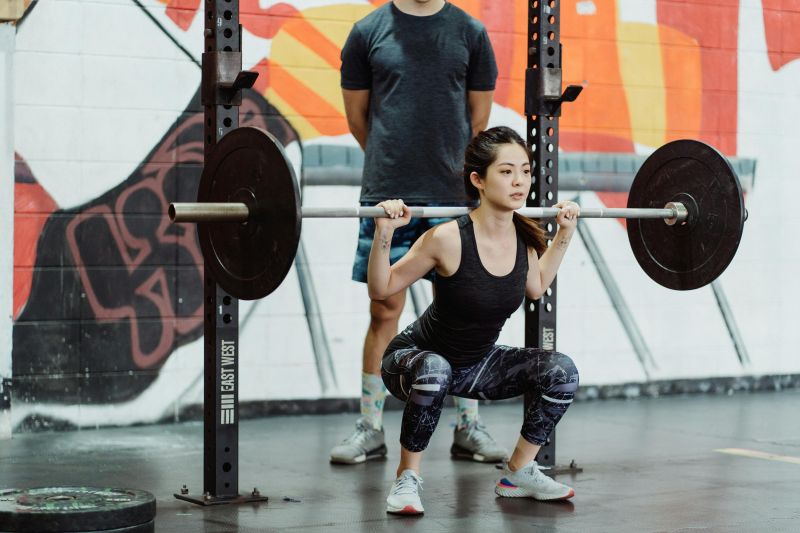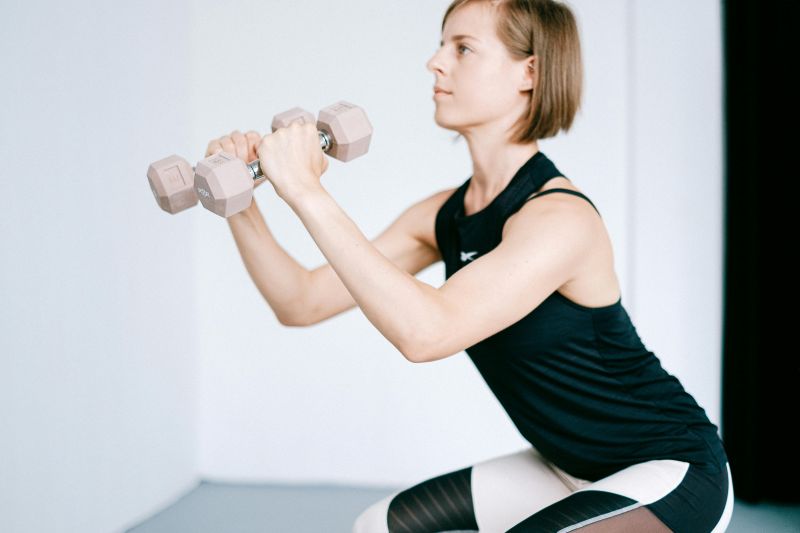If someone had told you that one exercise could light up your legs, challenge your core, and fix your posture—all without needing a fancy gym—you might’ve rolled your eyes. But the goblet squat does exactly that. It’s one of those rare moves that’s simple on the outside and sneaky-powerful on the inside.
Let’s unpack the goblet squat muscles worked, how it feels in real life, and why it’s a favorite among beginners and gym veterans alike. Whether you’re using a dumbbell or a kettlebell, this move deserves a regular spot in your routine.

What Muscles Does the Goblet Squat Actually Work?
When someone does a goblet squat right, the body turns into a strong machine, firing from head to toe. The goblet squat muscles involved aren’t just the obvious ones like the quads. It’s a team effort from your legs, core, and even your upper back.
The primary muscles targeted include:
- Quadriceps: The front of your thighs, responsible for straightening the legs.
- Glutes: Your butt muscles, especially gluteus maximus, work hard at the bottom of the squat.
- Hamstrings: The back of your thighs help control the movement and stabilize.
- Core muscles: Your abs and lower back act like a belt, keeping your spine upright.
- Upper back: Holding the weight at chest level wakes up your traps and shoulders.
So, even though it’s called a “leg day” move, the goblet squat actually taps into much more. Think of it like a tree trunk—you need strength from the roots (your feet) all the way to the branches (your shoulders) to stay balanced and strong.
People on Reddit forums discussing goblet squat muscles worked often mention how their abs burn almost as much as their legs. That’s because holding a weight out front forces the core to engage. It’s like doing a slow crunch every time you go down and back up.
Goblet Squat Muscles Worked Percentage: What’s Pulling the Most Weight?
Now, if you’re someone who loves numbers and breakdowns, you might wonder, “Which muscle works the hardest in a goblet squat?” While percentages vary depending on form and load, studies and fitness trainers agree on general ranges.
Here’s a basic idea of goblet squat muscles worked percentage:
- Quads – 40–45%
- Glutes – 25–30%
- Hamstrings – 10–15%
- Core (abs + obliques) – 10%
- Upper back & shoulders – 5–10%
This means your quads are the real MVPs, but the glutes are right behind them. If you squat deeper, your glutes fire up more. On the flip side, if you keep it shallow, your quads stay in charge.
People sometimes assume their glutes aren’t getting worked, but that’s usually a depth issue. A full range of motion—thighs below parallel—is key. And yes, your core and upper back are working behind the scenes, even if they don’t get sore right away.

Kettlebell Goblet Squat Muscles Worked: Does Equipment Make a Difference?
Some folks ask, “Does using a kettlebell instead of a dumbbell change the game?” In short—yes, but not drastically. The kettlebell goblet squat muscles worked are the same as a dumbbell version, but the feel is slightly different.
Why? The center of mass. A kettlebell’s weight sits lower and behind your hands, pulling your body slightly forward. That small change means:
- Your core has to work harder to keep balance.
- Your upper back gets a little more involved.
- Your grip and wrist strength improve, too.
One Reddit user shared that when they switched from a dumbbell to a 16kg kettlebell, they were surprised at how much harder their upper back and forearms had to work. This mirrors what trainers have observed in real-world settings—kettlebells subtly increase tension without changing the movement too much.
Goblet Squat Muscles Worked Glutes: Are You Really Hitting Them?
This is where things get personal for a lot of lifters. Everyone wants stronger glutes—not just for looks, but for hip health, posture, and injury prevention. So, does the goblet squat hit them enough?
Absolutely, but form matters. To make sure your goblet squat muscles worked glutes properly:
- Go deep—thighs below parallel.
- Push through your heels, not your toes.
- Keep your chest upright and tight.
When done right, the glute activation is strong. It may not match a barbell hip thrust or a heavy deadlift, but it still gives those muscles a serious challenge—especially when reps go high or you use a tempo (slow down, pause, explode up).
Many trainers recommend goblet squats to beginners who want to feel their glutes firing before progressing to bigger lifts. Think of them as a base layer for glute growth and strength.
Goblet Squat Muscles Targeted Versus Involved: What’s the Difference?
It might sound like splitting hairs, but there’s a difference between muscles targeted and muscles involved in any movement.
Muscles targeted are the main focus—the ones doing the bulk of the work. In a goblet squat, that’s the quads, glutes, and core.
Muscles involved are the supporting cast. They help stabilize, guide, and control the move. That includes:
- Calves
- Lower back
- Traps
- Forearms
A real-life example: If you’re holding a heavy kettlebell during a squat, your forearms may start to shake. They’re not targeted, but they’re absolutely involved.
Understanding this difference can help someone program their workouts better. For example, if the goblet squat muscles involved are already taxed, maybe skip barbell rows or kettlebell swings on the same day.

FAQ’s
What Muscles Does the Goblet Squat Work the Most?
The quads and glutes are the primary movers. The core and upper back help stabilize the movement.
Does Using a Kettlebell Change the Muscles Worked?
Yes, slightly. The kettlebell goblet squat engages more core and upper back due to its weight distribution.
Are Goblet Squats Good for Glutes?
Absolutely. Going deep and pushing through the heels activates the glutes effectively.
What Is the Muscle Activation Percentage in Goblet Squats?
About 45% quads, 30% glutes, 15% hamstrings, with the rest going to core and upper back.
Are Goblet Squats Beginner Friendly?
Yes. They’re often used as a teaching tool because they promote proper form and full-body control.
Final Thoughts: Why the Goblet Squat Is More Than Just a Leg Day Move
It’s easy to overlook the goblet squat. No barbell, no machines, no massive plates. But sometimes, simple is smart. Whether you’re just starting your fitness journey or revisiting the basics, the goblet squat offers full-body benefits that go beyond looks.
From the goblet squat muscles worked percentage to how it fires up your glutes and core, this movement packs more punch than meets the eye. And yes, whether you’re team dumbbell or team kettlebell, the results are real.
To learn more about strength training basics and squat variations, you can explore the Wikipedia page on Squats.
Keep your form clean, go deep, and hold that weight like it matters—because it does.

